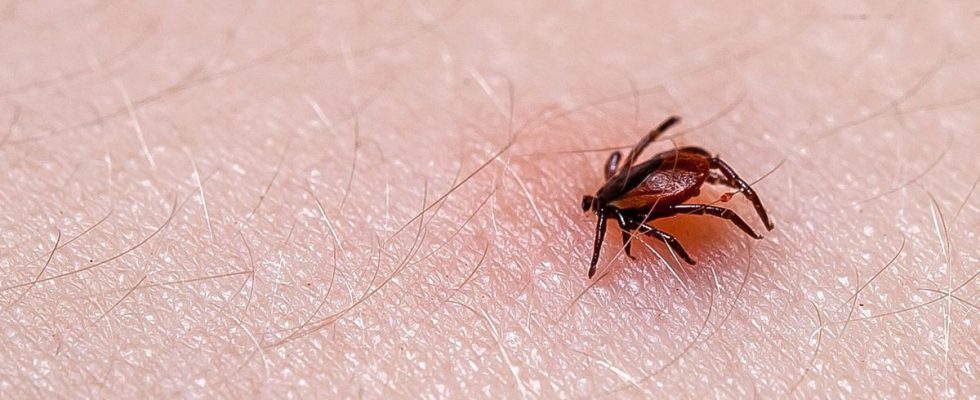Published on
Updated
Reading 3 mins.
If for the time being, no autochthonous case of Crimean-Congo hemorrhagic fever (CCHF) has been detected in France, the extension of the implantation of the Hyalomma tick in France could change the situation, according to ANSES. The explanations of Pr Eric Caumes, infectious disease doctor and consultant at the Hôtel-Dieu in Paris.
It is the National Agency for Food, Environmental and Occupational Health Safety (ANSES) which is issuing the alert, by means of a press release. “The Hyalomma tick, present in the South of France for several years, could extend its presence in France thanks to climate change. This tick can in particular transmit Crimean-Congo hemorrhagic fever (CCHF)”.
No autochthonous case in France, at present
For the moment, however, reassures ANSES, “no autochthonous case has been detected in humans in France”. However, our Spanish neighbors are not spared. Indeed, since 2013, the country has recorded cases each year, which have resulted in one death. The tick has also been present in Corsica since 2015.
In total, “three species of ticks of the genus Hyalomma are present in France” emphasizes the Agency. This is what drives Pr Caumes, an infectious disease doctor, to say that France will be “definitely affected” In the coming years.
An expansion of these ticks favored by climate change
Preferring dry climates and hot periods, ticks Hyalomma are found in France in the scrubland or maquis around the Mediterranean, areas to be kept under surveillance, for ANSES. It also calls for the development of research on this virus in order to quickly develop a vaccine against Crimean-Congo hemorrhagic fever.
What is Crimean-Congo hemorrhagic fever?
This species of tick, when carrying the Crimean-Congo hemorrhagic fever virus, therefore transmits the disease to humans. “In humans, Crimean-Congo fever is generally limited to an influenza-like illness with digestive disorders. In some cases, it can nevertheless worsen and result in a hemorrhagic syndrome, the fatality rate of which reaches 30% in some countries. reminds ANSES, which calls for setting up surveillance of these ticks on a national scale.
Figures confirmed by Professor Caumes: “Hemorrhagic fever is also a very contagious disease. In the event of a bite, if the patient gets worse and loses blood, caregivers are very exposed to a risk of contamination. This is what happened in Spain: the nurse who was taking care of a patient was contaminated in turn, she got away with it but the patient died, unfortunately..
The doctor therefore reminds you that it is essential to protect yourself from tick bites and that you must consult, in the event of the appearance of a fever after a bite.
As with fighting against Lyme disease, transmitted by another species of tick, prevention is important. Here are some simple rules to follow reminded by ANSES:
- “During nature walks, wear closed shoes and light-colored clothing to better spot ticks on the surface of the fabric;
- Avoid walking in the middle of tall grass, bushes and low branches and favor marked paths;
- If necessary, use skin repellents with marketing authorization (AMM), respecting the recommendations for use;
- Inspect yourself on your return from your walks in the forest, in the maquis and the scrubland or in the garden, especially at the level of the folds of the skin without forgetting the scalp;
- In the event of a bite, immediately detach the attached ticks using a tick puller, fine tweezers or, failing that, your fingernails and disinfect the wound;
- Monitor the sting area for several days and consult your doctor in case of symptoms (redness, fever, etc.).
